


































BY EMILY BRETH STAFF WRITER
ELBOW LAKE — It is no surprise to be able to find fresh produce and freshly made jelly and jam at Andria and Jacob Spranger’s farm, ANJ Meadows.
“We grow just about everything,” Andria said. “On average, I will spend 5-6 hours in the garden per day. Then, in my spare time, I make my jellies and jams and crochet.”
The garden is close to 5,000 square feet, with a little over 2,300 feet of it covered by a polytunnel.

“One nice thing about the polytunnel is it protects (the plants) from some wind and rain,” Jacob said. “The unfortunate side of it, though, is that we have to water it daily.
of
We try to plant water-loving plants outside to work with nature.”
A value the Sprangers hold closely to them is ensuring they let the crops grow on their own without any outside factors.
“I’d rather sell somebody something that is good quality rather than them getting something from the store,” Andria said. “We don’t add any chemicals or pesticides to our vegetables. It grows how it grows.”
Garlic is one of the products found at ANJ Meadows that has been growing since one year after Sprangers moved to the farm.
“Garlic is actually what started all of this,” Andria said. “We started about seven years ago, and this year we pulled about 3,000 heads.”
The original garlic plants were a gift from Jacob’s grandfather, who had been growing it for many years.
“We started (going to farmers) markets seven years ago, with me sitting in the back of my vehicle with a cooler of garlic,” Andria said. “Now we sell a bit of the garlic
online, but most is through markets.”
Some of the leftover garlic one year turned out to be a hit when Andria decided to make jelly with it.
“I was looking through the canning book because I had no idea what to do with the garlic, and I came across the recipe for jelly,” Andria said. “When I used to go to the Hoffman Farmers Market, another lady and I would work together because her bread was really good with the jelly.”
Now the Sprangers attend farmers markets in Elbow Lake and Battle Lake each week. Andria has even taken over running the Elbow Lake market.
“I have gotten a few new vendors this year, and we are working towards getting a winter market set up,” Andria said.
Sprangers page 2




October 5, 2024














Published by
Star Publications
Copyright 2024
522 Sinclair Lewis Ave. Sauk Centre, MN 56378
Phone: 320-352-6577
Fax: 320-352-5647
NEWS STAFF
Mark Klaphake, Editor
Mark.k@dairystar.com
Tiffany Klaphake, Assistant Editor tiffany.k@dairystar.com
Sara Eisinger, Writer
sara.e@star-pub.com
Emily Breth, Writer emily.b@star-pub.com
Rae Lanzrath, Writer raeanna.l@star-pub.com
Sara Hoppe, Writer
Carol Moorman, Writer carol@melrosebeacon.com
Natasha Barber, Writer natasha@saukherald.com
Ben Sonnek, Writer ben.s@saukherald.com
Hans Lammeman, Writer hans.l@star-pubs.com
Story ideas send to: annika@star-pub.com
SALES STAFF
Robin Brunette, 320-293-5911 robin@saukherald.com
Missy Traeger, 320-291-9899 missy@saukherald.com
Tim Vos, 320-845-2700 tim@albanyenterprise.com
Mike Schafer, 320-894-7825 mike.s@dairystar.com
Neil Maidl, 320-292-4454 neil.m@star-pub.com
Jaime Ostendorf, 320-309-1988 jaime@star-pub.com
Bob Leukam, 320-260-1248
bob.l@star-pub.com
PRODUCTION STAFF
Amanda Thooft
Nancy Powell
Maddy Peterson
Cheyenne Middendorf
Karen Knoblach
Annika Gunderson
Nadiia Griepentrog
Deadlines: Country Acres will be published the first Saturdays of April, May, June, September, October and November, and the third Saturday of every month. Deadline for news and advertising is the Friday a week before publication.
ISSN: Print 2834-6440 Online 2834-6459

“I learned a lot because I went through a lot of training and classes. It wasn’t required, but I did it so I could be better.”
Along with being a member of the markets, the couple is also a part of Minnesota Grown, Upper Midwest Garlic Growers Association and the Sustainable Farmers Association.

Andria also attends a few bigger shows throughout the year. She now attends about 15 shows but plans on adding more in the future and cutting back on the farmers markets.
“We know we want to do bigger shows since there is more networking with them,” An-
dria said. “However, I don’t want to give up the farmers markets either, because I like the local people and community.”
Being able to make connections at different events and farmers markets has helped ANJ Meadows expand its market.
“I meet someone new at these events and they will tell me about other events going on, so I am able to find more,” Andria said.


At the markets, Andria sells a range of products, from items she has crocheted to produce, goat milk soap, jam and jelly. The jams and jellies are among the newer products on the farm, having been first offered about four years ago.
“I just saw a need for it in the area because no one else in this area was making jam and jelly,” Andria said. “Right now, I think I have 30-35 different flavors. Some were customer requests, and some were just things I had left over and found a recipe for.”

ST R T

Publications bli ti “The newspaper of today is the history of tomorrow.”




Some of the most unique flavors that have been made include onion jam and pear Madagascar vanilla bean jelly.
Sprangers page 3

works on setting up her products Aug. 24 at the Donnelly Threshing Bee in Donnelly. At the markets, Spranger sells a range of products, from items she has crocheted to produce, goat milk soap, jam and jelly.

“My favorite part of all this is making the jellies and getting to see people,” Andria said.
As every job comes with challenges, Andria’s is no exception. The biggest one is predators for her plants and animals.
“We moved here about eight years ago and have been slowly growing,” Andria said.
A variety of produce sits on a table Aug. 24 at the Donnelly Threshing Bee in Donnelly. Garlic, one of the products that can be found at ANJ Meadows, has been growing since one year after the Sprangers moved to the farm.
“This is actually my family’s farm where I grew up. We lived in St. Cloud for 10 years and then moved back.”
Looking to the future, the Sprangers are not sure what the farm entails for them.
“We thought about possibly getting into the canned goods side rather than the produce,” Andria said. “We really haven’t decided yet; we are just going to keep going and see what happens.”



















































































from page 5














From there, Melanie started putting ideas together. She and her husband, Adam Dickman, have four children — James, Rebekah, Tabitha and Jonathan — so much of the inspiration for Kandi Land Farm’s activities was based on activities Melanie enjoys doing with them.
“The kids helped me with ideas, too,” Melanie said.

Bob Leukam
Marketing Consultant Office: 320-352-6577
Cell: 320-260-1248
bob.l@star-pub.com
Melanie also had encouragement from a couple of MARL friends, one of whom owns Otter Berry Farm near Perham.
“He came out to my place and helped me with the layout of parking and the flow of people,” Melanie said.
“I think it’s always good … when you set something up like this to ask people who have experience to make the first year go as smoothly as possible.”
Kandi Land Farm’s attractions include a tractor-shaped bounce castle, animal bounce toys, a barnyard petting area, pumpkin picking, a giant wagon slide, a lawn tractor-pulled barrel train ride, a kids’ farm-to-table play area, sand and corn play areas, a hayride, a tile tube slide, grain wagon basketball, a zipline, photo spots and vendor booths. New this year is a pump-powered rubber duck race.

For visitor education, some of the elements Kandi Land Farm stresses are the importance of soil health, cover crops and more.
“One thing I notice is that people really don’t know the difference between some of
the corns,” Melanie said. “They think that field corn and sweet corn are the same. … I try to make it where it’s educational, but you go there for fun and learn a little while you’re there.”
Normally,
Kandi Land Farm offers a corn maze, but because the farm had some flooding from this year’s rain, it might look different.
Dickman page 9






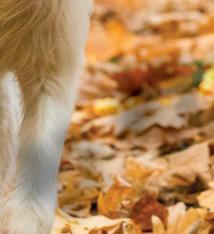





















Farming in general can be a lonely occupation. It can be very easy to get stuck in the same routine day in and day out when one rarely leaves the farm. Days turn into weeks, weeks turn into months, and months turn into years.


And because we are dairy farmers, there is not even much of a break in the winter. But we do try to make the most of the slightly larger amount of free time in the winter by getting together with friends more often. Jason and I have also joined a couple’s bowling league. Jason has been in a men’s bowling league for more than 10 years, and after we got married, we were asked to join a couple’s bowling league.
By Tiffany Klaphake
So now, every September through March, we bowl a couple of times a month. There are four people on a team in bowling, and in couples bowling, that means two couples bowl against two other couples. There are four couples on our squad, so each couple does not have to bowl every week. Couples rotate throughout the season. That way, each couple has the chance to bowl with each of the other couples. All four couples are dairy farmers, and all four have young children. Therefore, we need to find babysitters, and we all must be up early the next morning for chores.
Most of our teammates have their own bowling shoes and bowling balls, including Jason. I would classify our team as serious but relaxed. We all try our best but do not get too worked up about not hitting all 10 pins each time. Our main focus is simply to have fun and socialize. The nice thing about bowling is that it is a team sport as well as
an individual sport. There is built-in time to socialize since only one person can take their turn at a time, so the rest of us can sit back, relax and visit.
It is super exciting when one of us gets a strike, but sometimes the rest of us are so busy talking that we do not even notice. Or someone has to give a teammate a nudge to say, ‘Hey, it is your turn,’ because we could sit around the table and share stories all night.
There is the usual crop update among the guys, and the wives share stories of what our kids are up to and life in general. When I get a strike, I am just as excited for my score as I am to get back to the table to continue visiting with my teammates that much sooner instead of throwing another ball down the lane. So, while I am not going to set any bowling records, I look forward to the weeks when it is our turn to bowl for the comradery.
As a whole group, we have tried getting together on multiple occasions, including having our own little Christmas party. But often, one couple has something else going on or someone has sick kids. It does work out some of the time, and we always have a great time. One time, we all got together with our kids. Among our four couples, we had 19 children running around.
After being on the team for more than a couple of years now, I am excited to see my average score ever so slightly increasing each season. However, I am even more proud of the fact that I get to call this group of people dear friends of mine.




















































Town: Staples | Grade: 12
Parents: Matt and Michelle Lundquist
Staples-Motley FFA Chapter
What is your involvement in FFA? I have been in FFA since ninth grade when I was unexpectedly put on the officer team since we had two officers resign. I started out as the reporter, then worked my way up to secretary, vice president, and now president for the 2024-2025 school year. I have competed in many contests but have been most successful with forestry.
What has FFA taught you so far? FFA has taught me how to be a better person and to be a great leader. I have learned to cooperate with others and incorporate youth in all activities. I have also learned how to step up when times get chaotic and extra help is needed.
How do you intend to stay involved in agriculture after FFA? I plan on co-owning a dairy farm and owning a poultry farm. I currently have a small poultry farm that I plan on growing from here.
What are you involved in outside of FFA? I am involved in the National Wild Turkey Federation. I volunteer to help with banquets and youth hunts and involve youth with the outdoors. I also participate in pep band as well as concert band. Softball is the only sport I currently play, as I have turned my attention more towards my career and family life. When not in school, I work at Lakewood Health System as a certified nursing assistant at the care center.
What is something people need to know about agriculture? I think people need to know that agriculture is not just living on a farm. There are such a variety of things that come together to make agriculture what it truly is.


































from page 6
“I did plant Sorghum-sudangrass that was slow growing after a cool summer,” Melanie said. “It’s not going to be a tall corn maze as much this year, but normally, we have that.”
For Kandi Land Farm’s first year, the Dickmans could not find a food truck that would come out. Vendors wanted estimates for how many people would show up, and the family did not have those numbers. Then, Melanie found a mini-donut food truck for sale, so they bought it and tried it out at various events. Most of the funds raised benefit the farm, but the Dickmans also donate 10% to the communities they visit.
“I wasn’t really planning on running a mini-donut truck, but now I do that on weekends in the summer,” Melanie said. “We try to make it a local farm food truck, so we serve cheese curds from the Redhead Creamery and only use the sugar from (Southern Minnesota Beet Sugar Cooperative). … I believe we have given back $10,000 to local communities

between the food trailer and the farm.”
Area sponsors, such as the Kandiyohi Farm Bureau, Haug Implement Co. and SMBSC have helped Kandi Land Farm keep their entry fee low. Haug Implement Co. also lends the tractor the farm uses for their hayrides.
Proceeds from Kandi Land Farm go toward the organizations who volunteer to help them out, including local FFA chapters and 4-H clubs and

families in need.
After their first time hosting Kandi Land Farm, the Dickmans received positive feedback which helped shape their ideas for the following years.
“We heard lots of comments about our farm being a really relaxing place to go,” Melanie said. “It’s not as crazy busy as the (farms) by the Twin Cities where you have to wait in line. We try to keep the price really low so the people with bigger families can afford it.”
The Dickmans also made sure to install plenty of seating around the farm.
“I like when I can go and relax and my kids can have fun,” Melanie said. “I don’t have to stand and watch them all the time.”
To Melanie’s surprise, one of Kandi Land Farm’s most popular attractions has been their barn cats.
“I didn’t get it at first,” Melanie said. “They’re so tame that little toddlers can pick them up with no problem. … I’ve always lived on a farm and had barn cats, so I thought everyone had cats in their yard, so I didn’t think about cats being popular.”
Melanie’s children enjoy having
new people come out to their farm.
“When you live on a farm, you don’t have neighbors who come over all the time,” Melanie said. “They have new friends every day (when we’re open).”
When Kandi Land Farm is closed for the year, it operates as a regular farm. Melanie mows the corn maze every so often and it such a good corn maze that she sometimes gets turned around.
“The first few times you go in there, you’re like, ‘Oh, did I mow over there? I don’t remember,’” Melanie said. “There’s (also) maintenance with pumpkins and trying to weed.”
While the setup and cleanup can be difficult sometimes, the Dickmans have made Kandi Land Farm their annual tradition to bring agricultural fun and knowledge to everyone.
“Giving back to the local community is important to me,” Melanie said. “I grew up in FFA, I work in the agriculture field, I work with producers, and we farm. Agriculture is very important to me, and that’s the motivation for me.”

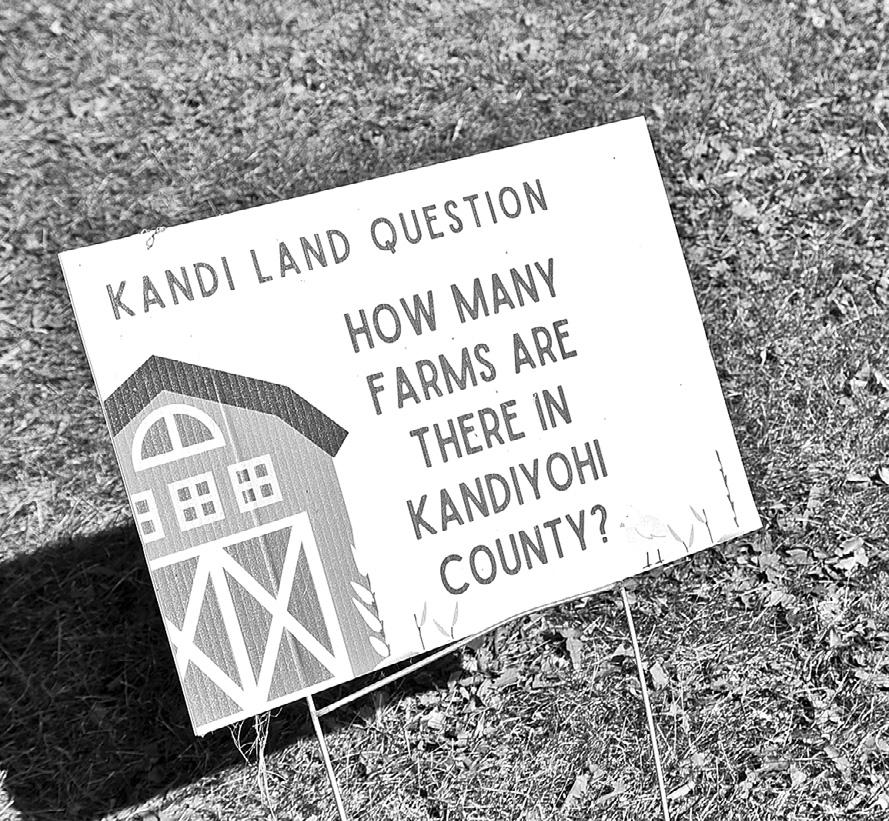




agricultural







































Carey and
Post stand by a rustic truck Aug. 9 at their home in Motley. They have traveled to junkyards in North Dakota, Nebraska, Wisconsin, South Dakota, Kansas and New York looking for recyclable metal.


Rusting shovels, grimy watering cans transformed into decorative art at Carey’s Cans
BY SARA EISINGER STAFF WRITER
MOTLEY — In piles of old “junk” — rusting shovels, corroded funnel boilers, dirty stove pipes, banged-up toolboxes and grimy watering cans — Brian and Carey Post of Carey’s Cans in Motley find timeless treasures.
Beauty transcends age and condition in the couple’s wonderland of recyclables where steel, aluminum, nickel and copper get washed, cut, painted and welded into masterful works of art.



They salvage hundreds of abstract designs every year, transforming bare front porches into aesthetically pleasing gathering spaces and flower gardens into extravagant landscapes.
Personalized creations could serve as eloquent centerpieces at marriage and reunion ceremonies, silly gifts at birthday parties or heartwarming reminders of the departed.
All the magic at Carey’s Cans happens inside the Posts’ workshop.
“Brian is the welder of the
operation,” Carey Post said.
He cuts and bonds old pieces of scrap metal to construct decorative, fun animals — lions, tigers, bears and even peacocks.
Carey is a dedicated artist who spends up to 12 hours each day painting the lion’s mane a brilliant gold or the peacock’s feathers hot-pink.


















































































Light-up
cans are
page 11
She meticulously draws and carves abstract designs into the metal with her handy-dandy plasma cutter.
“I have to say we do at least 50-60 animals a year,” Carey said.










Carey cuts signature hearts into most finished products.
“My first husband passed away, and my kids were like, ‘Mom, you should light those up and put a heart in there for Dad,’” Carey said.
Carey’s husband, Mitchel Mammenga, of Randall, passed away at just 32 years old Oct. 28, 2005.
“That’s why the hearts are on all the cans,” Carey said. “All my cans have an opening to place lights in. It’s gotten to be my signature.”
Carey placed LED stream lights in a cream can, displaying dragonflies and daisies to light the night sky’s backdrop. A bright heart shone like a little star to brighten her backyard with love.
“People will order these from me for funer-

als,” Carey said. “They fill them with flowers and give them to the family.”
One customer called Carey with a special memory of a deceased loved one in her heart.
“I drew what I could of the memory and sent
her a picture,” Carey said. “She loved it. So, I cut out six. She gave each one of her kids one for Christmas. Four out of the six kids called me to say, ‘Thank you.’”
Post page 13

















Brian and Carey Post of look through recycled treasures Aug. 9 at their shop in
aluminum, nickel and copper are washed, cut, painted and welded into masterful works of art
Tears filled Carey’s eyes. The story reminded her of all the dogs they have made from combinations of cans, tanks and posts.
“If someone had a dog that passed away, they can keep it on their front steps,” Carey said. “They might want the puppy’s name on it, too.”
Carey especially enjoys celebrating the holidays.
“These cans are two-sided,” she said. “One could have Christmas on one side and Halloween on another.”
Carey lifted a cream can, and her face lit up to match Santa’s joyful expression. When flipped around, it revealed a jack-o-lantern wielding a wide, sinister grin.

“People kind of give me an idea of what they like, and I draw like three different pictures,” Carey said. “Are they hunters? Do they like fish?”
Once approved, Carey grabs safety goggles and her plasma cutter. Other customers trust her creativity and welcome the surprise.
The cutting and welding of metal waste began nine years ago.
“Brian was so excited because he’s a mechanic and he likes to fix things,” Carey said. “Then one day, we went to Junk Stock in Nebraska.”
According to the Minnesota Center for Environmental Advocacy, metal makes up 4.5% of landfilled materials. Another 1.2% is electronic waste. Recycling is less carbon-intensive than mining — copper recycling emits 65% less greenhouse gas pollution than mining, while nickel recycling produces 90% fewer emissions.
The idea of getting creative with recycled materials clicked on a rather long journey back from the junkyard.
“Brian was like, ‘You can do that,’” Carey said. “And, I said, ‘Absolutely not. There’s no way,’ because I just don’t do that kind of stuff. I used to manage hotels. I managed seven properties. On a seven-hour drive home, he talked me into buying a plasma cutter. We stopped somewhere and found one. We went home and instantly grabbed gas cans and started cutting. That’s where it has all boomed from — it was just a hobby that turned into a fulltime job.”
Carey’s Cans has surpassed 3,100 Facebook followers, many happy to lend a helping hand.
“When trying to find someone with cans, this person sends me to that person and that person sends me to another person,” Carey said. “We will wake up on Saturday and go to Iowa. We’ve gotten cans from North Dakota, Nebraska, Wisconsin, South Dakota, Kansas and New York. When my daughter was getting married, we picked up cans in Watertown, New York.”
The Posts have sold their art around the nation, from the east to the west coast. Like the metal they weld, carve and glaze, doing so has fully melted their hearts into one.
“It’s definitely brought us closer together,” Carey said. “I feel like we do so much more together, now. We wouldn’t have gotten up on a Saturday morning and went to Iowa and came home Sunday night. Back in the day, it just wasn’t our thing.”
Brain and Carey spend quality moments with their kids and grandkids in their free time.
“They love the animals,” Carey said. “It’s funny — when you show them a picture, they know that Grandma did it.”
The remainder of the couple’s time is spent rummaging through other people’s “junk” and making it beautiful again. Then, it goes up for sale.
“We got there one hour and 15 minutes early,” Carey said. “We already had a long line.”
Eager customers asked Carey about holiday décor, light-up watering cans and more.
“I love it,” Carey said.
















































































































A combine rests at the edge of a field Sept. 19 near Eagle Bend. The field of edible black beans was approximately 50 acres.






























































































































October 7-12, 2024
BY EMILY BRETH STAFF WRITER
4-H is commonly thought of as kids showing animals. However, it goes beyond that. The organization is also concerned about community and growth, as demonstrated by several local clubs and their members.
Susan Wasson, a club leader for West Union Country Kids, said 4-H was originally formed in the late 1800s to get farmers to expand their horizons and improve their way of farming.
“Back then, people realized kids were more open to new ideas,” Wasson said. “Now, it has grown into so much more than farming, and most kids in it are actually from cities.”
Sarah Wasson is currently serving her second term as president of West Union Country Kids. Among the club’s most popular events are a
parade and a raffle and sticker sale.
The club works closely with community members of West Union to ensure the parade goes as smoothly as possible. Another small activity the 4-H club puts together for the day is a sticker sale and raffle.
“Part of what we have done is go around to businesses and ask for donations for our club,” Susan said. “Now, we use club funds to buy gift cards for businesses because we don’t think it is reasonable to be asking for help when businesses are already struggling.”
Another fundraiser is a holiday wreath and garland sale. The importance of raising money for the club, Susan said, is so they can donate money to other charities, provide supplies for community services and projects, and help support events throughout the county.
4-H page 21































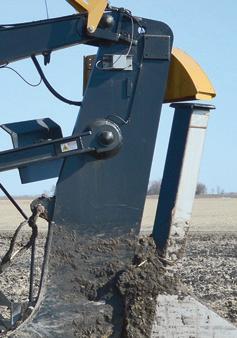


























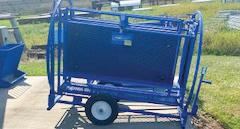


















parade and raffle or remind people about it, club members hang flyers in various locations.
“This parade has been going on




for more than 20 years, so it is a pretty well-known event,” Susan said. “It is known for having a crazy amount of candy thrown out, and people really enjoy it.”
The club does not anticipate changing the parade since the system for pulling it off works and people enjoy the result.
“We also have a float in the parade to help raise awareness for 4-H if (others) want to join,” Sarah said. “We have had club members join and









become interested at parades, so it is good for our club (and) for businesses that are small and want some publicity.”
Even with a club of their size, they aim to do great things. Sarah has been in 4-H for five years, holding the position of secretary prior to her current role.
4-H page 23
























































































































“I became a leader because we have a small club, and there are really only four parents who are involved with it, and three of us are leaders,” Susan said. “It is just easier for us to split the responsibilities.”
Other community involvement through this club includes donating a variety of items to nursing homes, cleaning and beautifying the park.
Not far away in Alexandria, the 10-year-old daughter of Anthony and KayCee Sanborn, Madaline Sanborn, can also be found making a huge impact on the community through her work for Ronald McDonald House Charities.
“In September, I went to the 4-H (Shooting Sports and Wildlife Invita-

tional) and cooked and served the officials meals to raise money,” Sanborn said. “This is my second year, and I raised about $1,500 that weekend that I will buy pajamas with.”
Sanborn also sent out flyers to counties attending asking for support through the donation of pajamas. Throughout all her events, she will accept donations on the needs list. However, at the state shoot, she strictly asked for pajamas, she said, because that is what the kids are wearing every day.
Another fundraiser she does is at the Douglas County Fair, where she sells snacks and water. The proceeds from the fair — about $2,500 — were used to purchase items on the needs list.
Sanborn will lead all the fundraising herself but receives help from a
range of businesses and organizations. Another task Sanborn dedicated herself to was making toys for kids at the Ronald McDonald House.
“I plan on building another 200 (toys) and plan to deliver everything at the beginning of December to Rochester,” Sanborn said.
Every six months Sanborn creates 150-200 toys. Throughout all her different fundraisers and projects, she does most of it on her own without the help of a club and only receives some help from her family on occasion.
Outside of 4-H, she has joined the Global United Pageant group, where she was crowned Golden Miss Global United. Sanborn is also in 8-10 parades yearly to help raise awareness.
“Since it is a very good cause, I started doing it,” Sanborn said.
















































































• 5 1/2 cups apples, diced
• 1 teaspoon cinnamon
• 1 1/2 cups sugar
• 1/2 teaspoon salt Mix for topping; let sit.
• 2 1/2 cups flour
• 1/2 teaspoon salt
• 2 tablespoons sugar
• 1 cup shortening
• 2 egg yolks mixed with milk to equal 2/3 cup
• 2 egg whites
• 1 cup cornflakes
Combine all ingredients except egg whites and cornflakes to make dough. Roll 1/2 inch thick in a 10 1/2 - by-15 1/2 -inch pan. Add crushed cornflakes to top of crust. Beat egg whites (no sugar added) and spread on top. Put apple mixture on top. Bake for 40 minutes at 400 degrees. Frost with powdered sugar frosting while hot.
• 6 large apples (about 3 pounds), peeled, cored and sliced 1/2inch thick
• 2 cups sugar
• 2 eggs
• 1 teaspoon vanilla
• 1 teaspoon salt
• 1 teaspoon baking soda
• 1 1/2 teaspoons baking power
• 2/3 cup sugar
• 2 teaspoons cinnamon
• 2 tablespoons butter
Place the apple slices into crock pot and sprinkle with sugar and cinnamon; stir to coat evenly. Cut butter into small pieces and dot over apples. Cover and cook on high for 3 hours, or low for 6 hours, stirring about halfway through cook time. Dish will be done when the apples are tender but not soggy.
• 2 teaspoons cinnamon
• 2 cups flour
• 3/4 cup oil (can substitute apple sauce)
• 3 cups chopped apples
Mix all ingredients and put in greased and floured 9- by 13-inch pan.
• 1 frozen deep-dish pie crust
• 1/2 cup chopped pecans
• 1/4 cup flour
• 1/4 cup packed brown sugar
• 2 tablespoons margarine
• 1 large egg
• 1/4 cup granulated sugar
Topping:
• 2 tablespoons butter
• 1/3 cup brown sugar
• 1/3 cup sugar
• 1/2 teaspoon cinnamon
• 1/2 cup nuts
• 1/2 cup shredded coconut
Mix all topping ingredients and sprinkle on top of cake mixture. Bake at 350 degrees for 45 minutes.
• 2 tablespoons cornstarch
• 1/2 teaspoon ground cinnamon
• 1 tablespoon fresh lemon juice
• 3 pounds apples, cored, peeled and cut into 8 wedges



Preheat oven to 375 degrees. Thaw crust at room temperature for 15 minutes. While crust is thawing, mix pecans, flour and brown sugar in a bowl. Work in butter with fingertips until mixture resembles coarse crumbs. Set aside. Poke bottom and sides of crust with a fork and bake 12-15 minutes or until lightly golden. Brush bottom and sides of hot crust with a light coating of egg white. Reset oven to 425 degrees. In a large bowl, combine sugar, cornstarch and cinnamon. Toss in apples and lemon juice. Cover with waxed paper and microwave on high for 12 minutes, stirring halfway through. Spoon filling into crust. Sprinkle pecan topping over filling. Bake 10-12 minutes or until topping is golden.









What is your favorite dish to make from apples?

How many apple trees do you have and what varieties are they? We only have two trees, and they’re both Granny Smith.
What maintenance or care do you do to the trees? We just cut off dead branches, but don’t spray or fertilize them.
What is your favorite dish to make from your apples? Apple pie.
What do you do with any leftover apples you have? We just leave them on the ground for the deer to eat.

(pictured with her son, Sawyer) Little Falls | Morrison County
How many apple trees do you have and what varieties are they? We have 38 total — eight in our yard and 30 along our property line in the back. The trees in the yard are State Fair, Harrelson and Zester, and the ones in the back are cross varieties and crab apples.
What maintenance or care do you do to the trees? We prune them in the spring, but that’s it.
What is your favorite dish to make from your apples? We love baked apples on ice cream. We also make “apple nachos,” where we put whatever toppings we want on them — caramel, chocolate sauce, chocolate chips, whatever you like. We press the apples and make “freezies” too.
What do you do with the leftover apples? We don’t usually have many left, but if we do, we feed them to our pigs, goats and chickens.
How many apple trees do you have and what varieties are they? We started with 12, but two were damaged in a storm, so there are now just 10. There are Honeycrisp, Haralson, Fireside, Sweet Sixteen, Zestar, Honey Gold and McIntosh.

What maintenance or care do you do to the trees? I’ll trim them and spray them if I absolutely need to, but I try to avoid doing that.
What is your favorite dish to make from your apples? Apple crisp.
What do you do with the leftover apples? Give them away. Usually, our neighbors take them.
























































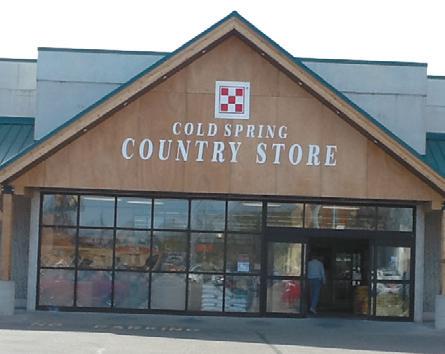
































































































Even the most stoic farmers need some support at times — for the sake of themselves, their families and their farms.
Mental health professionals Monica Kramer McConkey and Dr. Leslie Russell-Martin have about 50 years of combined experience caring for rural clients in central Minnesota. While countryside conversation has increased over farmers’ mental and emotional needs, there are still stigmas that need to be overcome.
“Overall, the stigma of mental health referral is slowly becoming better,” Kramer McConkey said. “People are becoming more open (to) talking about it (and) looking at how they can access services, so it’s becoming more of a conversation. In the past, it was kept under wraps; people didn’t talk about their mental health.”
Kramer McConkey has helped with a wide range of mental health needs in rural communities, often brought on by factors outside farmers’ control, like weather, commodity prices and interest rates. Working in isolation for long hours and with family and in a space that is both home and workplace makes it hard to get away from the day-to-day grind.
“Right now in particular, we are seeing so many farms in transition from one generation to the next, and that is its own struggle,” Kramer McConkey said. “With some farms, there are three generations working and the middle generation doesn’t necessarily have much of a shot at being the primary producer because the older generation is still active on the farm, so that’s a perfect storm for family conflicts and financial struggles.”
If left unaddressed, mental health issues could spiral into increased isolation, relationship breakdowns, anxiety, depression, chronic stress and difficulty making decisions or remembering things. These can manifest as physical problems too, including headaches, stomachaches, muscle aches and chronic disease. Rural suicide rates are also high.
“The thing I try to help people recognize is that you are the greatest asset on your farm,” Kramer McConkey said. “The functioning of your operation is completely dependent on how well you are functioning. So if you’re wanting to






















































































from page 29
hang onto the farm (and) be successful there, you’ve got to deal with the thoughts (and) emotions you’re having that are not helpful and other mental health symptoms.”
True Balance, founded by Russell-Martin, celebrates its 20th anniversary in 2025. Prior to founding the practice, Russell-Martin provided mental health services on the Mille Lacs Reservation and later at Little Falls Community Schools, as well as in private practice, beginning in 2003. Today, True Balance has clinics in Little Falls, Cold Spring and Hutchinson.
“I grew up in a rural community,” Russell-Martin said. “I’ve always been very passionate about serving this rural population and veterans.”
Kramer McConkey has worked in behavioral therapy for nearly 30 years in rural areas in a variety of capacities, including direct service and administrative. She opened her private practice, Eyes on the Horizon Consulting, in 2019 and has focused her work on Minnesota farmers and ranchers.
Russell-Martin believes traumatic brain injuries and chemical exposure are underreported yet serious factors in rural mental health. Farmers can also have small strokes, mild heart attacks and other cardiac issues which can worsen and

BY BEN SONNEK
result in cognitive impairment if they are not treated.
“How many times do they take a fall, how many times do they hit their head, … how many times do they have those accidents … that happen on the farm where they just get up, shake it off and move on because they have to get stuff done,” Russell-Martin said. “We have instances of traumatic brain injury and instances with chemical exposure … and that has huge cognitive effects.”
Even with the lowering of mental health stigmas and people talking more openly about rural mental health, it is often difficult for the farmer to leave the field for treatment. However, access has been expanding to rural areas, particularly
through telehealth sessions and on-site visits.
For Kramer McConkey, seeking help for mental health issues should be no different than going to the doctor to treat an injury or illness.
“If you had a kidney disease, you wouldn’t hesitate to go get help from a doctor and take medication,” she said. “For some reason, when it comes to our mental and emotional health, there’s a disconnect. … Our mental health is just as tied into who we are as our physical health, and getting help and treatment for any issue you are experiencing is good.”
Russell-Martin encourages farmers to keep track of their mental health and record it electronically or on paper, like how they keep track of their
agricultural production.
“They know exactly what their cows were fed down to the pound … and what the output is,” she said. “However, we don’t pay attention to our bodies that way; pay attention to your body and how you’re feeling.”
Practicing gratitude for the small things also helps improve everyday mental health, whether that is appreciating the sunrise, greeting family in the morning or finding a favorite tune to play while working.
“Instead of rushing through your day, practice being grateful for the small things,” Russell-Martin said. “It’s very stressful to farm most days. What are the small things you can be thankful for?”
Kramer McConkey recom-
mends tending to four areas: maintaining physical health, surrounding yourself with supportive people, getting control of your thoughts and keeping a spiritual protective factor.
For physical health, getting enough sleep is especially important.
“(Sleep) is the foundation our health is built on,” Kramer McConkey said.
The spiritual protective factor is not always just going to church on Sunday. Rather, it is what gives one hope and feeds the soul.
“It’s important that we have things we can look forward to, that bring us joy and happiness so our life has meaning,” she said.
Ultimately, as the head of the farm, farmers must take care of their mental health.
“If you go down, the farm goes down,” Russell-Martin said. “If you’re not taking care of you, you can’t take care of anybody (or) anything. … It’s not selfish and it’s not a waste of time to take care of yourself when you’re the critical instrument in making your farm and family run.”










**Offer ends 10/31/2024. Available at participating and eligible dealers only. Offer may vary by product type, series, model and select units in dealer’s current inventory. Must take delivery from dealer stock by 10/31/2024. Offers available on new equipment in US and Canada only. Some restrictions apply. Length of contract and rate may vary. Monthly payment subject to change. Prior purchases not eligible. See dealer for details. Financing provided on approval of credit by authorized Bobcat finance providers to well-qualified buyers. All finance programs and rates are subject to final approval by the applicable Bobcat finance provider and are subject to change at any time without notice. Administrative fees may apply. Offer not available to government accounts, national accounts and municipal/utility bid customers. Bobcat Company reserves the right to extend or discontinue any of these programs at any time without prior notice.







































































































48,000Acres Soldinthe Last3Years
In the past 3 years, Weiss Realty closed over 700 transactions which is equivalent to over $300,000,000 in sales volume totaling just over 48,000 acres sold. Properties sold included farms, hobby farms, rural homes with acreage, cabins, campsites, country estates, tillable ground and hunting land. It is a great time to consider selling.
Crow Wing County - 32.17 Acres w/Home - $399,900 - Sold
Freeborn County - 164 Acres - $299,000 - Sold
Kanabec County - 20 Acres w/Home - $275,000 - Sold
Kanabec County - 82 Acres - $249,900 - Sold
Meeker County - 17 Acres - $110,000 - Sold
Meeker County - 120 Acres - $101,250 - Sold
Mille Lacs County - 10 Acre Buildsite - $99,500 - Sold
Mille Lacs County - 10 Acres - $99,500 - Sold
Mille Lacs County - 15 Acres - $120,000 - Sold
Mille Lacs County - 20.07 Acres - $159,900 - Sold
Mille Lacs County - 25 Acre Buildsite - $154,900 - Reduced
Mille Lacs County - 80 Acres - $130,000 - Active
Mille Lacs County - 259.7 Acres - $529,000 - Sold
Morrison County - 85 Acres - $215,000 - Active

Morrison County - 120 Acres - $432,000 - Sold
Morrison County - 129 Acres - $399,900 - Active
Morrison County - 133 Acres - $518,700 - Sold
Nobles County - 200 Acres - $1,220,000 - Sold
Otter Tail County - 6 Acres Waterfront Lot - $130,000 - Sold
Otter Tail County - 80 Acres w/Home - $299,900 - Sold
Pine County - 71 Acres w/Cabin - $189,000 - Reduced
Rice County - 41 Acres w/Home - $1,250,000 - Sold
Rice County - 201 Acres - $1,500,000 - Pending
Scott County - 20 Acres w/Home - $1,200,000 - Sold
Sherburne County - 5.58 Acres Build Site - $174,900 - Sold
Sherburne County - 47 Acres - $445,000 - Sold
St. Louis County - 40 Acres - $41,900 - Sold
Todd County - 68.28 Acres w/Home - $749,900 - Sold
Todd County - 77 Acres - $320,000 - Sold
Todd County - 116 Acres - $439,000 - Sold
Wright County - 68 Acres - $710,000 - Sold
Wright County - 106.48 Acres - $1,250,000 - Sold

